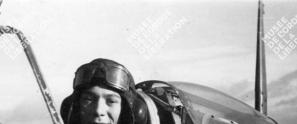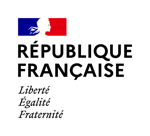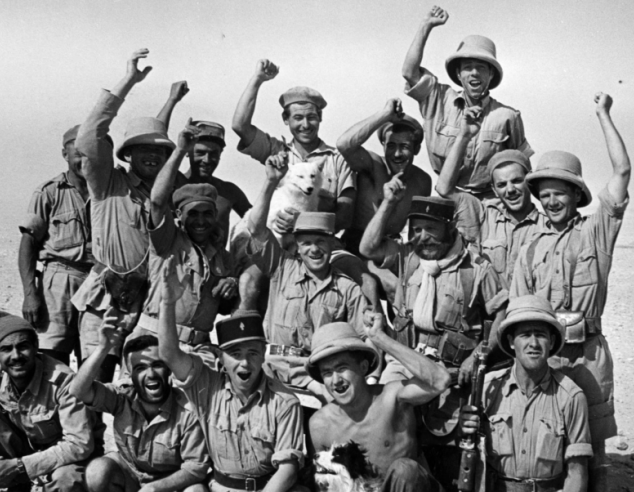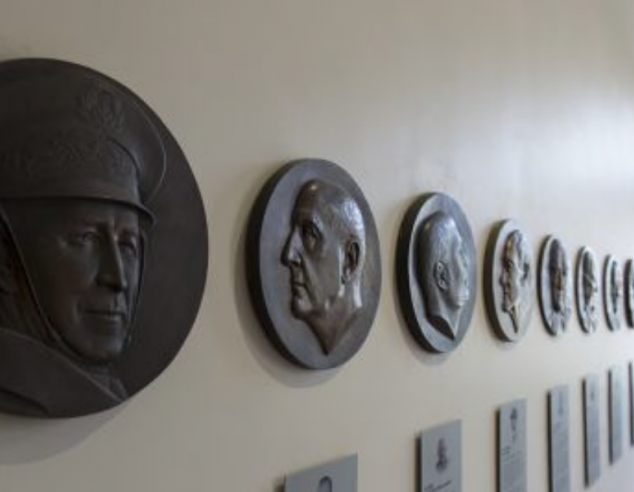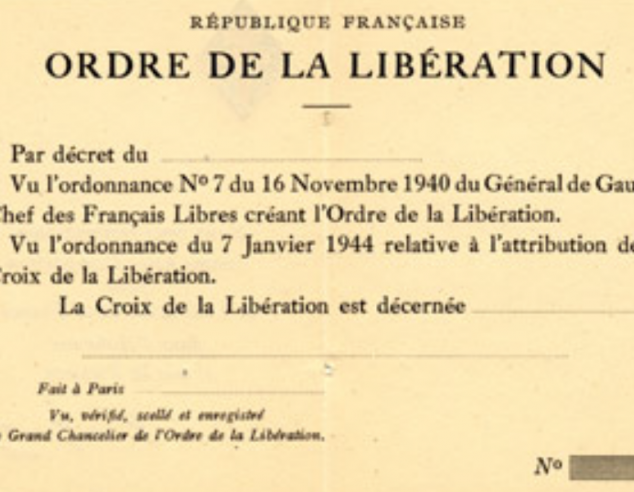Nantes
Nantes is the first city to have received the Cross of the Liberation, on November 11, 1941.
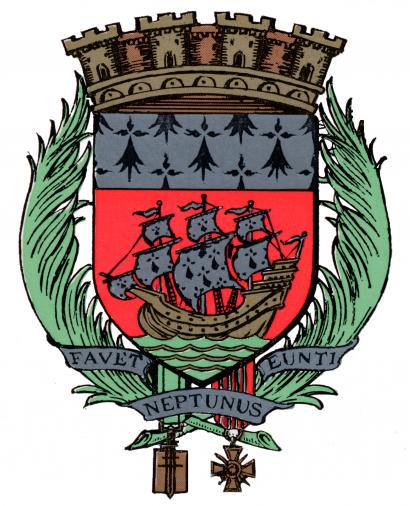
On June 19, 1940, German troops entered the city of Nantes. The strategic points (port, stations, etc.) were immediately occupied and, in order to guarantee public order, military authorities obliged city authorities to compile a list of 20 hostages without delay. Repressive measures were part and parcel of the occupation from day one. In addition, 45,000 French prisoners of war were incarcerated in various camps in Nantes and the surrounding area until they were transferred to Germany in January 1941.
Spontaneous pockets of resistance consisting of individuals and small, isolated groups emerged In Nantes, and in other areas, as soon as the occupation began. In July 1940, the foundations of the first intelligence network were formed under the leadership of Jean-Baptiste Legeay (who was later beheaded in Cologne in February 1943). The network transmitted key data on the location of German units to London. In addition, one of the very first underground newspapers, En Captivité, emerged in Nantes in November 1940.
Among other actions, (including the severing of several communication lines), two students hung a French flag on the lighting conductors of Saint-Pierre Cathedral on November 11, 1940 – the anniversary of the 1918 Armistice. On December 16, the Bocq-Adam group set fire to the Hippodrome in Petit-Port, where a depot holding German trucks sat full of new tires.
Also in Nantes, Free French Naval Officer Honoré d'Estienne d'Orves was arrested on January 22, 1941. He was the head of the Nemrod network, responsible for establishing the first radio link with London, which took place out of Chantenay.
Yet sanctions implemented by the occupying authorities continued to rain down on the city, which was hit with a daily curfew from 9 pm to 5 am. Fines of several million francs were successively imposed on the city, while residents were required to watch over power plants and communication facilities. In Camp Choisel in Châteaubriant, political prisoners swiftly replaced prisoners of war, who were sent to Germany. On August 30, 1941, Marin Poirier, a member of the Comité d'entente des associations de combattants et victimes de guerre, a liaison committee for combatant associations and victims of war in the département, who organized the escape of many prisoners from Camp Choisel, was the first person from Nantes to be shot.
On October 20, 1941, the city’s Feldkommandant, Lieutenant-Colonel Hotz, was shot dead in the city center on rue du Roi Albert by Parisian Resistance fighters belonging to Jeunesse, Gilbert Brustlein and Spartaco Guisco battalions who went on to liberate the capital. Two days later, 48 hostages were shot in retaliation: 27 at the Sablière quarry in Châteaubriant and 16 in Nantes, at the Bêle firing range, while another 5 Resistance fighters from Nantes suffered the same fate in Mont Valérien.
In the months that followed, new attacks took place and further hostages were executed, selected among detainees in Nantes and political prisoners at Camp Choisel. On November 11, 1941, General de Gaulle awarded the Cross of Liberation to the city of Nantes, “a heroic city that fiercely opposed any form of collaboration with the enemy, ever since the criminal act of surrender took place”.
In early 1942, attacks against collaborators and Germans were carried out, and lines of communication were severed. This was largely the result of resistance to communist obedience. The crackdown only continued to get worse, and a total of over 500 Nantes residents were held hostage by the Germans until the city was liberated.
From January 15-28, 1943, in a trial known as the “42”, the German military tribunal of Nantes issued 37 death sentences to Free Fighters and Partisans (FTPF) in the region, the majority of whom were arrested as of the summer of 1942 by the French authorities. It was without doubt the deadliest trial of the entire Occupation in terms of the number of death sentences handed out.
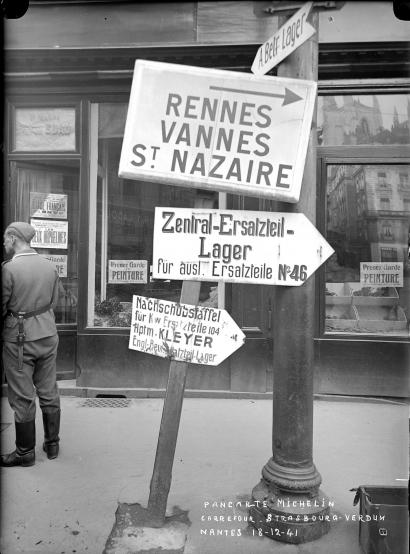
Allied bombings in the city were equally as tragic; starting in October and December 1941, then April and May 1942, May and September 1943, and around the time of the Normandy landings on June 6, 1944.
Many lives were lost: 15,000 people were affected, several thousands of homes were destroyed, and over 1,500 people were killed.
In June 1944, one of the last German operations to take place was the destruction of the Saffré maquis, in which 350 young maquis fighters with very little equipment held their own in front of 2,500 Germans, before scattering. 27 maquis fighters were shot on June 29 at Château de la Bouvardière.
On August 12, after the Germans who blew up bridges and port facilities had left, 5e Bataillon FFI arrived in the city followed by the Americans. Mayor Clovis Constant and the new City Council were inaugurated by Préfet Vincent.
On January 14, 1945, General de Gaulle presented the Cross of Liberation to the city of Nantes and to Mayor Clovis Constant during a public ceremony.
In addition, six Nantes residents (René Babonneau, Jean Demozay, Alfred Heurtaux, Bertrand Jochaud du Plessix, Yves and Jean Mahé) were individually named Companions of the Liberation.
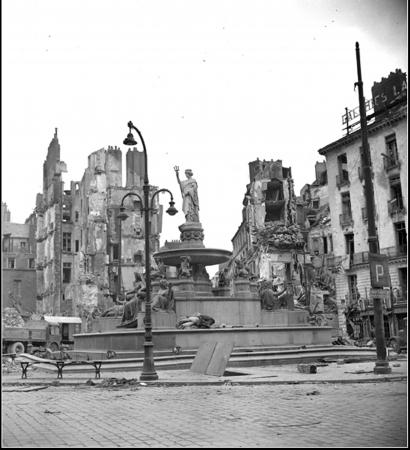
“Such emotion grips us all today, in this great liberated city which showed France in 1940, in 1941, in 1942 and in 1943, what a good, large French city can do and knows what to do when it is courageous and resolute! The destruction, the deaths, the physical and moral trials collectively endured here, and the even tougher trials that each of you endured in your homes and in the secrecy of your hearts; it all represents the entirety of what Nantes gave to France, and what France will never forget.
This is why, on behalf of France, the Leader of the Government of the République, accompanied by the Ministers of Reconstruction and Agriculture, has come to award the city with the highest possible distinction: the Cross of Liberation, by virtue of which it becomes a “Companion of the Liberation” and all that it represents in terms of courage, sacrifice and unity. I say unity, as this is crucial in order to successfully carry out all that remains for us to do: we must end this war victoriously. Perhaps some of the toughest physical trials still await us.
But this year will be a glorious one, a victorious one, the year in which we will go to the Rhine. The year in which all our suffering will be rewarded, ensuring that our suffering was not fruitless and that our people did not die in vain. [tremendous ovation]
France knew how to come back to life, to rise from the grave, bigger than ever. We will get past this. I am taking full responsibility for it, here in Nantes, in front of the whole country. France needs all of its children to secure victory and its future. It knows very well that some of its children may have had illusions; but it also knows that the vast majority of them remained faithful to the homeland.
France wants all of its children to have a place in the homeland. These are the feelings that stir us all and fill the souls of all our soldiers fighting in the east, and of all those who, in the immediate vicinity, are confronted by the last remaining Germans clinging to our soil: these soldiers, who belong to one single French army, who are there to testify that France wants to be served and become a great united power. That is our wish. Is that not so, Nantes? Am I not right in saying so?” [indescribable ovation]
“A heroic city who fiercely opposed any form of collaboration with the enemy, ever since the criminal act of surrender took place. Occupied by German troops and subjected to the harshest measures of oppression, it provided a shining example of courage and loyalty, through numerous individual and collective actions, for the people of France. Through the blood of its martyred children, it has just testified the French desire for national liberation before the whole world.” (Nantes, Companion of the Liberation by Decree of November 11, 1941)



